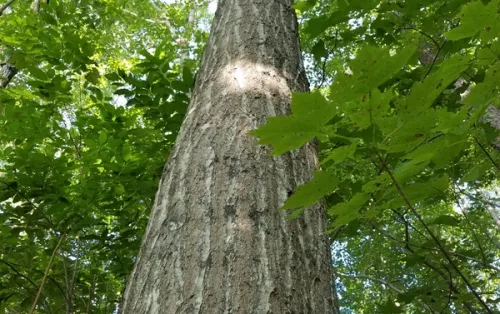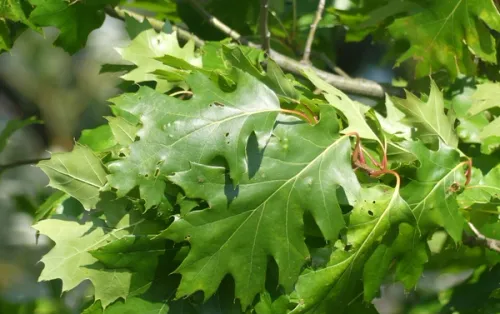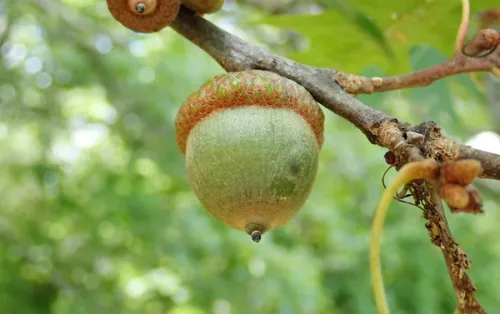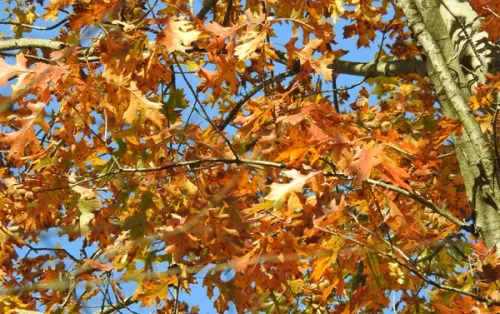Northern Red Oak
The Northern Red Oak is a towering and stately tree that can reach heights of 60 to 75 feet, with a broad rounded canopy, making it a dominant presence in any landscape. Northern Red Oak is also notable for its deeply lobed, glossy green leaves that turn a brilliant red in the fall. Like other oaks (genus Quercus), it produces acorns that are an important food source for birds, squirrels, deer, and other wildlife. Along with this, Northern Red Oak is a host plant for over 400 species of moths and butterflies, each of which feed on its foliage as caterpillars. Northern Red Oak adapts well to a variety of soil types, though it prefers slightly acidic, well-drained soils, and is ideal for urban parks, large gardens, and natural forest settings.
Details
Range Map
Ecological Benefits
Maintenance Tips
- Water young trees regularly to help establish a strong root system; mature trees are relatively drought-tolerant.
- Prune in late winter to early spring to remove damaged or diseased limbs and maintain structural integrity.
- Performs best in well-drained, acidic soils but is adaptable to many soil conditions.
- Apply mulch around the base to help retain soil moisture and regulate soil temperature.
- Monitor for signs of pests such as borers and diseases like oak wilt. Maintain tree health to prevent and reduce issues.









